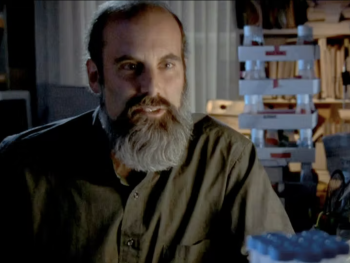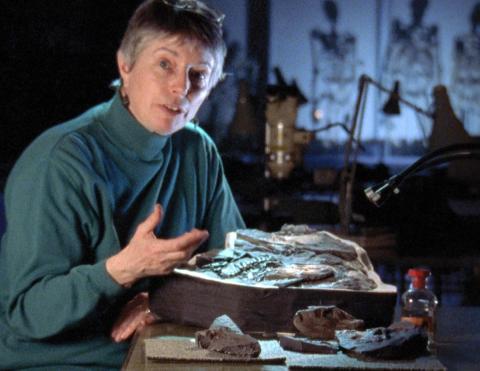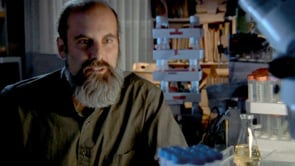
One of the most exciting discoveries over the last couple of decades in developmental biology and genetics, has been the recognition that similar genes make similar structures in very different organisms.- -Matt Scott, 2001
Geneticist Matt Scott looks at how genes build bodies. He investigates how genes gave rise to new body plans. Scott’s model is the fruit fly and the genes that control how the body is built. Geneticists, like Scott, often look at mutations to find their answers and Scott shows us a mutant fly. Mutant flies led to the discovery of Hox genes, regulatory genes that tell an embryo how to build the basic form of an animal. He’s excited to realize that very different animals use some of the same genes to build very different structures. This implies that there was an ancestral animal that had those genes. What did that ancestor look like?
About Matt Scott’s career
Matt Scott, Ph.D. is a Professor of Developmental Biology and Genetics at Stanford University’s School of Medicine. He received his Ph.D. from MIT and started teaching at Stanford in 1990. Scott works with cultured cells, fruit flies and mice to investigate how normal embryos grow and to discover the genes that control development and how damage to them leads to birth defects, cancer, and neurodegeneration (the death of neurons). He, along with colleagues, discovered the "homeobox" an evolutionarily conserved component of many genes that control development (Hox genes are one class of homeobox genes).
He is presently Co-chair of the Center for Children's Brain Tumors. He has been election to the American Academy of Arts and Sciences, the National Academy of Sciences, and the National Institute of Medicine, and served as President of the Society for Developmental Biology.

















